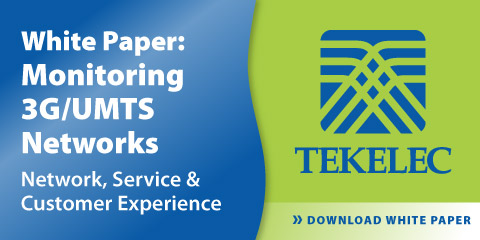
article page
| 1
| 2
| 3 |
Some providers, however, such as Verizon (whose FiOS service is one that is not, exclusively, IPTV) declare that their technology makes management a less challenging, not more challenging, task. Jim Smith, a spokeperson for Verizon, notes that "Full IP connectivity between all devices and our network application servers using SOA has made provisioning and remote support dramatically easier than cable and satellite environments."
|
|
The OSS/BSS battles of delivering IPTV were fought and won several years ago. |
|

video offering, Smith replies "No. In fact, our entire home network can be managed remotely via access to the broadband home router and the set-top box, letting us troubleshoot for customers, allowing some self-install capacity and giving us service monitoring right into the home." That level of
|
|
|
|

High Fiber
FiOS has some natural advantages when it comes to offering video service. "Verizon’s FTTP network was designed for maximum flexibility in both service provisioning and to accommodate future service developments," says Smith. "As such we use three streams of light: One carries a traditional broadcast RF signal currently used for all of our linear TV delivery. In addition, there is a downstream data wavelength used for voice, Internet downstream traffic, and for our Video-On-Demand delivery. The latter is served by IPTV formatted signals. "
Therefore, the sheer capacity offered by a fiber service like FiOS, when intelligently managed, is substantial. "We have enormous video capacity due to the downstream data link and could, in fact, migrate some or all of our signal to IPTV. The downstream data link also would feed Internet-based video to our customers, once a streaming video product is developed," Smith continues. "In addition, by taking fiber all the way to the home, we avoid the constraint MSOs face with just the RF bandwidth to work with for all their services AND we can feed a broader set of services to the home than the node-based service AT&T offers. So, by design, we have flexibility and service options no other carriers of our size enjoy."
When asked if there are specific OSS/BSS challenges that have accompanied the FiOS
|
|

visibility is interesting, but is it entirely unique? Perhaps not within the Telco world, but the cable market still lags in proactivity, monitoring, and other elements of OSS/BSS that have been the hallmarks of telco service for a long time.
But is it enough? Cable remains strong, even in a soft economy, and telcos have to deal with the expensive prospect of rollouts, as well as continuing to tackle a public perception of telcos as somehow less serious about TV than cablecos. Smith is undaunted by the economy. "FiOS TV is now at roughly 23 percent penetration in areas where it is open for sale. We grew by nearly 300,000 customers in the first quarter to a total of 2.2 million. At rougly 19 percent growth year over year, it’s safe to say the product is selling itself despite the economy." Likewise, the speed of rolling out fiber service seems to be one that Verizon is willing to deal with. "Construction continues," Smith says "and is a bit ahead of the pace to be made available to some 18 million customers by the end of 2010."
Challenges
Let's not forget that there are a few other challenges that should be addressed that are outside of the telco-vs-cable or telco-vs-telco battles for TV market share. Recent Nielsen and ComScore numbers place the number of monthly Hulu views at around 335,000,000,
article page
| 1
| 2
| 3 | |
|





